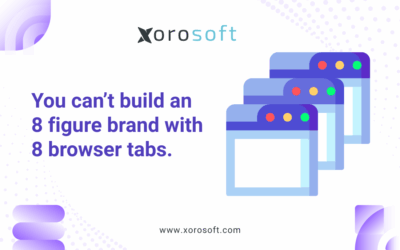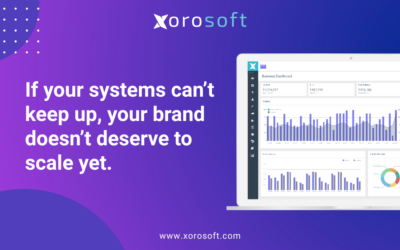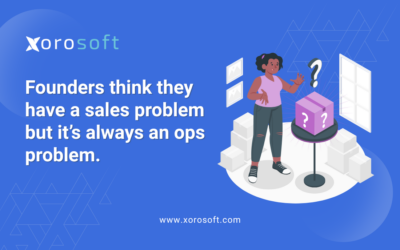
The Growing Challenge Behind Every Brand
Every thriving ecommerce or retail brand eventually hits a wall of operational complexity. However, as sales rise, systems, spreadsheets, and apps multiply. Therefore, without a clear foundation, chaos spreads fast. That’s where retail operations software becomes essential.
In practice, the right platform connects inventory, orders, finance, and fulfillment. As a result, when your operations layer runs smoothly, you spend less time firefighting and more time growing your brand. In short, simplicity isn’t just convenient — it’s your new competitive advantage.
Simplifying Success with Retail Operations Software
Today’s brands compete on speed, accuracy, and experience. However, many leaders still juggle too many disconnected tools. Consequently, each extra login, sync, or import creates friction.
When data lives in silos, small mistakes multiply quickly. For example, a missing stock update triggers overselling, and slow reporting hides cash issues. Therefore, unifying your systems through retail operations software isn’t just an upgrade — it’s a strategy for control.
Moreover, with simplicity in place, teams move faster and every department works from the same, accurate data.
What Streamlined Retail Operations Look Like
When a brand simplifies its workflow using integrated software, daily life improves across the board. For example:
-
Inventory updates automatically after every sale.
-
Orders route directly to the right fulfillment center.
-
Finance teams close books faster because data reconciles in real time.
-
Leaders gain visibility into cash flow without manual tracking.
As a result, everyone spends less time fixing and more time improving. Ultimately, the right retail operations software connects these dots so people focus on growth instead of routine maintenance.
A Real Example: From Confusion to Clarity
Consider a mid-sized apparel retailer earning around $12 million annually. Initially, they used Shopify, multiple spreadsheets, and six third-party apps to handle logistics. Unfortunately, this setup led to delayed shipments and rising refund rates.
After implementation, comprehensive retail operations software transformed results:
-
Order cycle time fell from 2.8 days to 1.5.
-
Pick accuracy increased by 31%.
-
Cash conversion cycle dropped by 22%.
-
Meanwhile, the operations team reduced headcount by 25% — without burnout.
In addition, leadership finally had confidence in their numbers. Therefore, decisions became faster and less stressful.
How Retail Operations Software Improves Efficiency
To simplify operations sustainably, follow this seven-step framework. Each step builds clarity and reduces friction.
1. Map Every Workflow
Begin by identifying each manual touchpoint in fulfillment, purchasing, and accounting. When you visualize your workflow, bottlenecks become visible.
Metric: Manual steps removed per week.
2. Centralize Core Data
Integrate orders, stock, and financials into one shared view. In effect, retail operations software becomes your single source of truth.
Metric: Reporting time cut by 50%.
3. Automate Predictable Tasks
Use rules for purchase orders, replenishment, and low-stock alerts. Consequently, human attention shifts toward creative problem-solving.
Metric: Time saved per employee per week.
4. Streamline Communication
Replace constant updates with automated triggers and dashboards. As a result, everyone knows current status without asking.
Metric: Internal messages per order decreased.
5. Protect Cash Flow Visibility
Connect payables, receivables, and inventory. Consequently, you avoid tying up capital unnecessarily.
Metric: Shorter cash conversion cycles.
6. Create a One-Page Performance Board
Summarize five KPIs — fulfillment rate, pick accuracy, cycle time, return rate, and available cash. Then, review them daily.
Metric: Variance between target and actual performance reduced.
7. Embed Simplicity in Culture
Make simplification a regular practice. During weekly reviews, identify one redundant task to eliminate. Over time, results compound.
Metric: Redundant processes retired each quarter.
One Week to a Clearer Back Office
Change doesn’t require a full overhaul. Instead, dedicate one focused week to reset your foundation:
- Day 1: Map all workflows from order to fulfillment.
- Day 2: List every app and tool your team uses.
- Day 3: Select North Star metrics such as pick accuracy or cycle time.
- Day 4: Demo two or three retail operations software platforms.
- Day 5: Discuss with your team where friction occurs.
- Day 6: Draft your simplified system architecture.
- Day 7: Automate one task and measure the time saved.
By the end, you’ll already see smoother communication, fewer errors, and a calmer team.
Recognizing When It’s Time to Simplify
How can you tell when your setup has become too complex? Look for these signals:
-
Reporting takes hours to compile.
-
Stock levels in your store don’t match reality.
-
Multiple tools overlap in function.
-
Growth feels risky instead of exciting.
When these symptoms appear, integrated retail operations software is the antidote.
The Tangible ROI of Simplification
Brands sometimes hesitate, fearing that new software might slow things down. However, data shows the opposite.
According to G2’s Easiest-to-Use ERP Systems, companies save 30–50 hours per month once workflows are unified. In most cases, teams achieve full ROI within six months.
Moreover, simpler operations reduce refund rates, increase order accuracy, and accelerate fulfillment. Therefore, customer satisfaction and cash flow improve together. As a result, operational simplicity pays for itself.
Choosing the Right Retail Operations Platform
With dozens of tools available, choosing wisely matters. To decide faster, consider the following:
1. Ease of use: Your team should learn it quickly.
2. Native integrations: It must connect with Shopify, Amazon, and accounting.
3. Scalability: It should handle multi-channel or multi-warehouse needs.
4. Transparent pricing: Avoid hidden costs for integrations or seats.
5. Responsive support: Reliable help minimizes downtime.
Next, explore trusted sources for comparison:
Both resources offer verified reviews and real implementation feedback.
Building a Culture of Operational Clarity
Technology is powerful, but people make it work. Therefore, encourage your team to challenge unnecessary processes. For instance, if a report doesn’t inform action, automate or remove it.
As clarity increases, morale rises. Consequently, turnover drops and focus improves. Notably, a strong retail operations software foundation reinforces this culture by making performance visible and progress measurable.
The Power of Unified Operations
When every department uses the same connected platform, decision-making becomes effortless. For example:
-
Marketing launches campaigns knowing inventory is accurate.
-
Finance monitors profitability per SKU instantly.
-
Operations forecast purchasing with confidence.
Therefore, the business functions like a single system — fast, responsive, and aligned.
Sustaining Simplicity for Long-Term Growth
Simplicity isn’t a one-time achievement; it’s a discipline. Accordingly, the most successful brands continually refine how they work. By doing so, they free time for strategy, innovation, and creativity.
Every hour saved internally is an hour reinvested in customers. Over time, that separates growing brands from stagnant ones. By investing in modern retail operations software, you’re not just buying technology — you’re building a long-term edge.
Take the Next Step Toward Operational Clarity
If daily tasks still feel heavier than they should, it’s time to explore your options. Start small: review ratings, test demos, and gather team feedback.
You can begin here:
Ultimately, simplicity scales. Once your operations run on clear, connected systems, growth no longer creates chaos — it amplifies opportunity.
Search
Categories
- ACCOUNTING & FINANCIALS 62
- Business 1
- E-COMMERCE & CHANNEL INTEGRATIONS 72
- ECommerce 3
- ERP 822
- FINANCE & ACCOUNTING 9
- INVENTORY & OPERATIONS 12
- Inventory Management Software 1
- OPERATIONS & INVENTORY 67
- PROCUREMENT & SUPPLY CHAIN 9
- PURCHASING & SUPPLY CHAIN 62
- Software 1
- WAREHOUSE & FULFILLMENT WMS 64
- WMS & FULFILLMENT 12
Recent Posts
-
 Founders say “I’m grinding.” No — you’re compensating for bad systems.
Founders say “I’m grinding.” No — you’re compensating for bad systems. -
 You can’t build an 8-figure brand with 8 browser tabs
You can’t build an 8-figure brand with 8 browser tabs -
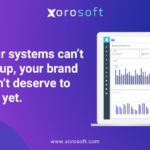 If your systems can’t keep up, your brand doesn’t deserve to scale yet
If your systems can’t keep up, your brand doesn’t deserve to scale yet -
 Everyone chases revenue. No one fixes the leaks.
Everyone chases revenue. No one fixes the leaks. -
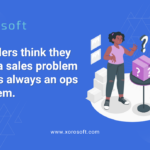 Founders think they have a sales problem — but it’s always an ops problem
Founders think they have a sales problem — but it’s always an ops problem

